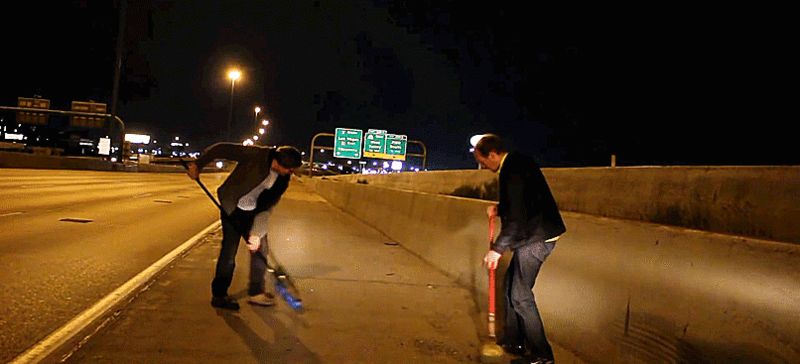
Platinum is worth about $1,000 an ounce. Did you know you can sweep some of that right off the side of a busy highway?
Oh, yes of course there’s a catch: the amount precious metal you’ll yield is going to be very, very tiny and you’ll need to do a lot more than sweeping and sifting to get it!
Platinum, or at least trace amounts of it, ends up on the side of the road because it’s an essential element of your car’s catalytic converter. That’s basically a short segment of the exhaust pipe used to filter engine emissions, which it does because some of the noxious gas coming through your exhaust is actually attracted to and trapped by the precious metal.
Advertisement
Naturally, as cars get old and dented, specs of the platinum flakes off and litters the highway. In this video below, YouTubing scientists Cody and Adam show you exactly how hard it is to harvest the valuable material from grit that piles up on the roadside.
Sponsored
Sorry to disappoint anyone who read the headline and saw dollar signs. Obviously, the value of metal recovered by this labor and material-intensive process isn’t coming close to the work put in to getting it.
But for those of you still planning on prospecting the local highway, here’s the basic breakdown:
- Sweep up as much road grit as you can.
- Remove big bits of rubber, ciggie butts, used condoms and other such treasures you don’t want.
- Strain it until you’re working with a fine powder.
- Dissolve most of your dust with a sodium-carbonate solvent.
- Superheat your remaining material in a furnace.
- Pull the lead slag out of what’s left, break that up.
- Put your broken lead into a bone-ash pot that will absorb lead-oxide, but leave your precious metal behind.
- Put your lead in the pot back in the furnace.
- After all that, you just might be lucky enough to be left with a bead of less than 0.000 grams of platinum!
Don’t be too discouraged by the unprofitability, the process is still pretty fascinating to watch.
As to why our heroic scientist thought this would be a viable experiment in the first place, he presents the following theories:
Advertisement
A catalytic converter contains 2 to 3 grams of platinum. (Side note: that’s why they cost so much.) Another YouTube video from “Ask Arthur” discusses this in slightly more scientific detail if you’re interested:
A converter loses about half of its platinum every 100,000 miles.
If 10,000 cars drive a given section of road every day, over a one-mile stretch of a that road 100,000 miles will be driven every 10 days. Meaning after a year, there could be an ounce of platinum by the roadside.
Through some other line of reasoning, our YouTuber calculates that you could end up with “6.7 grams (of platinum) per ton (of road grime)” you sifted and processed.
Now keep in mind, those are the theories presented in the video. I’m pretty sure the only answer that matters to “how much platinum can you sweep up off the highway?” is “not nearly enough.”
Still, it’s interesting to see how a handful of filth can be boiled down to a precious metal!











